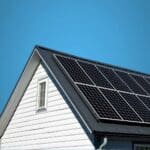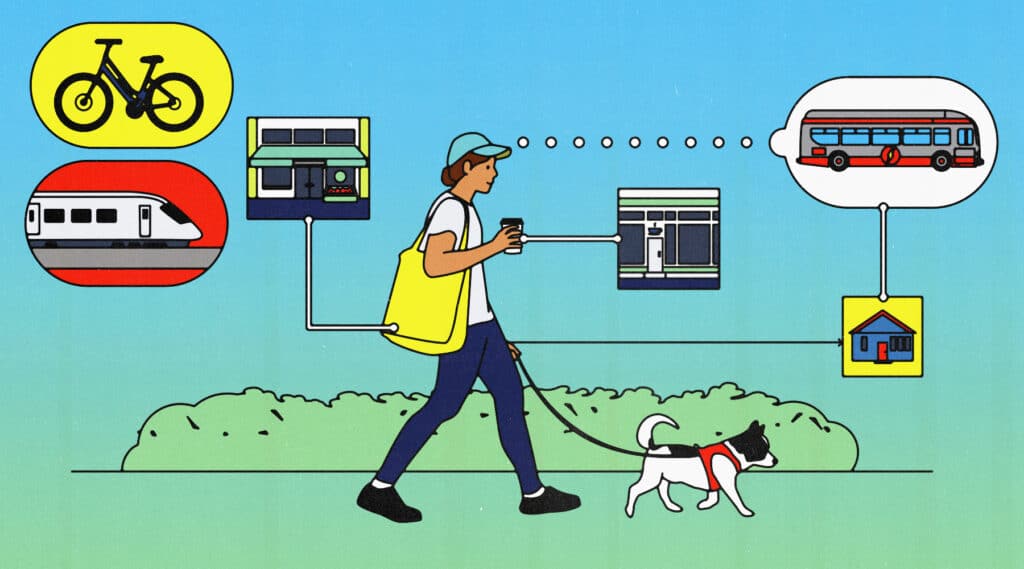It’s no secret that farms across the U.S. are struggling, made worse by volatile energy and commodity prices, trade tensions with China, and economic losses from the pandemic. The costs of farm inputs—from energy and labor to animal feed—are expected to skyrocket. Meanwhile, farm incomes continue to decline, and bankruptcies are rising (up 20 percent in 2019 to an eight-year high). Small farms, which represent half of the nation’s farmland and 90 percent of farms, are especially hard hit, even though they are critical for the health of both rural economies and local ecosystems.
Farmers are also getting a bad rap on the climate front. Agriculture accounted for 10 percent of U.S. greenhouse gas emissions in 2019, with the bulk coming from livestock (both from methane that animals like cows and sheep release during digestion, as well as from manure) and emissions from soils. Meanwhile, climate change is making agriculture more unpredictable, with farmers facing water shortages and extreme weather events like droughts and floods. In light of all this, we need to step up efforts to reduce agricultural emissions and to empower farmers through clean energy solutions.
Enter renewables
Fortunately, over the past decade, more and more farmers have embraced the opportunities of clean energy. Farmers are opting to lease a portion of their land to a wind or solar company in exchange for a monthly payment. The wide-open spaces on farms are ideal for “planting” wind turbines or a solar array (a practice known as agrivoltaics) alongside a crop or livestock. Evidence shows that such dual-use clean energy solutions can be adopted by most farms—regardless of their size, type, or location—and add tremendous value while posing little risk to farmland or surrounding ecosystems.
Let’s take a closer look at some of the benefits:
A new income stream
For struggling farm families, the greatest boon is financial. “It’s not so much about green energy at all, but economics,” said Kerri Johannsen with the Iowa Environmental Council, who notes that wind power is “just another crop, another opportunity to capture resources.” Put simply, leasing ag land for wind or solar makes economic and operational sense and provides an important supplement to farm incomes.
According to one analysis, the clean energy “side gig” represents 6 percent of a farm’s gross cash income in Pennsylvania and Oklahoma, sometimes exceeding government payments. Landowners who either host wind turbines on their fields or who are near enough to turbines to receive a “good neighbor” payment can earn $3,000 to $7,000 yearly. Research shows farmers who own and farm land with turbines are more likely to have a plan in place to pass their farm on to their children and to invest in the long term, since the turbine income makes farming seem less risky.
For struggling farm families, the greatest boon is financial. “It’s not so much about green energy at all, but economics.”
In a recent survey of 400 farmers, nearly a third said they had been in discussions with solar companies about leasing their land (usually for a 30-40 year period), and 3 percent already had contracts. Farmers are adopting solar leases at more than double the rate of contracts aimed at using their land for carbon sequestration, since farmers can earn $1,000 per acre or more with solar. In the case of wind installations, lease payments to farms with turbines total $250 million annually nationwide. “[T]he absence of financial stress has been a real game-changer for me…. The turbines make up for the (crop) export issues we’ve been facing,” observed one Kansas farmer.
Improved productivity
The benefits aren’t just economic. Research has shown that installing clean energy on farms can also help with crop and livestock productivity. “[S]ome food and vegetable crops…have been shown to produce higher yields when grown under the shade of PV panels,” said Peter Perrault with Enel North America. For example, the presence of solar panels in fields has led to: improved vegetation growth and pollinator presence at a solar farm in Minnesota; an increase in celery yields and an increase in land use efficiency for potatoes at a family farm; and an overall increase in land use efficiency of 60-84 percent over two years. A study on a sheep farm found that installing solar panels resulted in about the same level of animal production as not having panels, while providing numerous other benefits.
Water and soil conservation
By providing a barrier from the wind and sun, solar panels can also help increase water retention in the soil, reducing the need for irrigation by up to 20 percent. In one analysis, the water-saving “microclimate” created under the panels resulted in a 90 percent increase in the grasses that sheep and cows graze on. Another study found that while the shading led to fewer forage plants produced, those that did grow had a much higher nutritional content, which promotes quicker livestock growth. Meanwhile, a German study found that solar structures protect against damage from hail, frost, and drought, thus eliminating the need to protect crops with foils and other materials.
In one analysis, the water-saving “microclimate” created under the panels resulted in a 90 percent increase in the grasses that sheep and cows graze on.
Farmers also have observed that sheep prefer the shade under solar arrays and that cattle line up in the tall shadows cast by wind towers (shuffling slowly in a formation known as a “bovine sundial“). This reduces the need to build other shade structures, and the animals also require significantly less water.
The bigger picture
From a clean energy perspective, using ag lands for wind and solar is a better proposition than using them to support other forms of renewable energy like biofuels. Currently, around a quarter of the corn planted in the U.S. is used to produce ethanol fuel for transportation. But research shows that if the same acreage were used for solar generation instead, this could yield as much as 1.8 to 2.5 terawatts of electricity. To put this in perspective, according to some estimates, the U.S. could reach 100 percent clean electricity with around 1.1 terawatts of wind and solar combined.
Even better would be to incentivize farmers to combine wind or solar projects with “farms” of native grasses, rather than the extensive cornfields currently used to produce biofuel. This would provide a much-needed opportunity to restore native ecosystems and reduce soil erosion while also addressing climate change. Research indicates that solar projects that support native grasses can sequester up to 65 percent more carbon than cropland alone. Bringing back native grasslands would also boost populations of local pollinators as well as protect soils from erosion and excess water runoff.
Overall, combining clean energy and agriculture is a no brainer for many farmers. Not only does it have the potential to improve the economics of farming, but it can boost crop and livestock productivity and help improve the land and soil itself. While clean energy alone won’t revitalize rural communities, it can be a key part of the solution. And importantly, the ag + clean energy combo is both politically and socially palatable, finding support in a broad diversity of communities. It’s time to ramp up our investment in both our farmers and our clean energy future.















